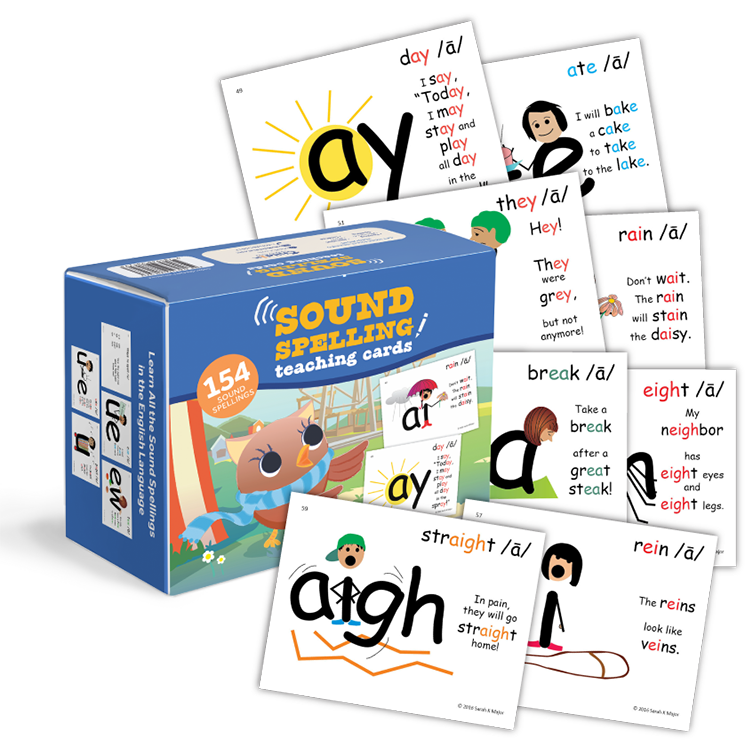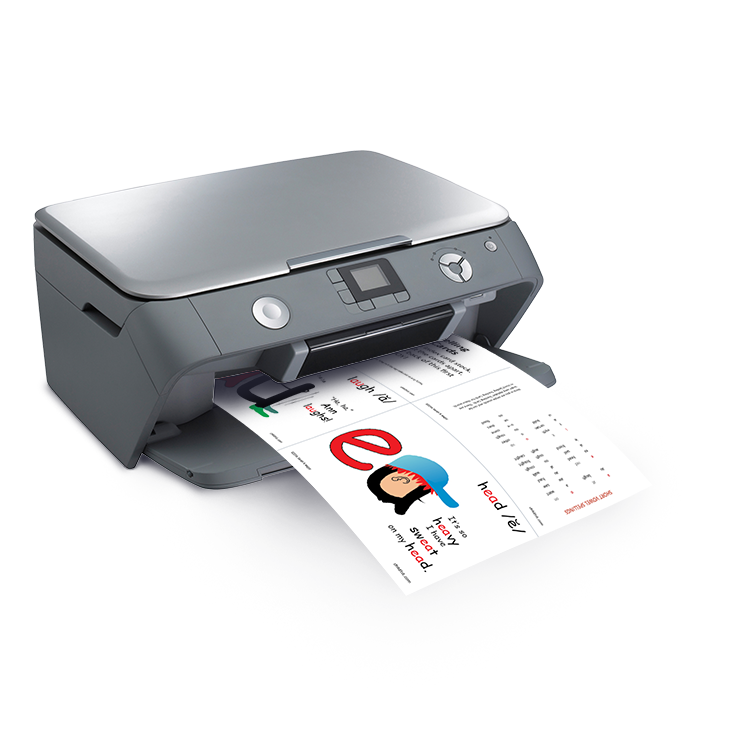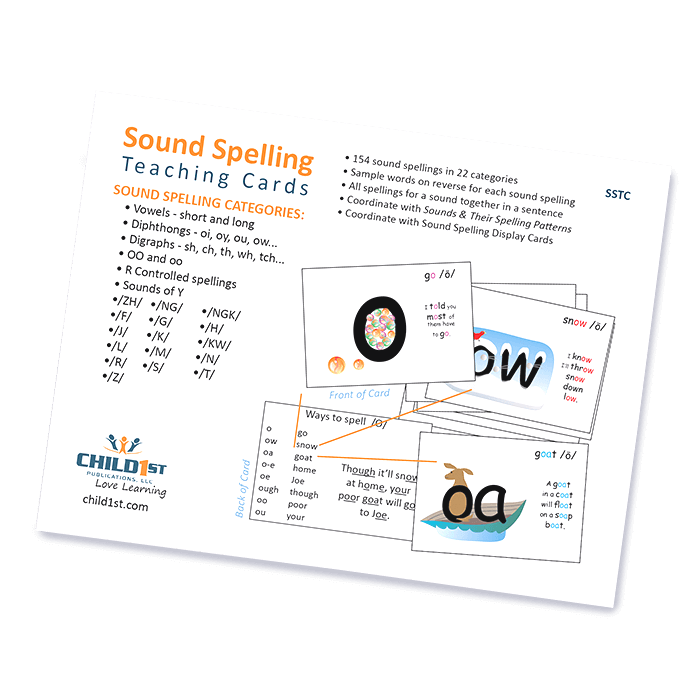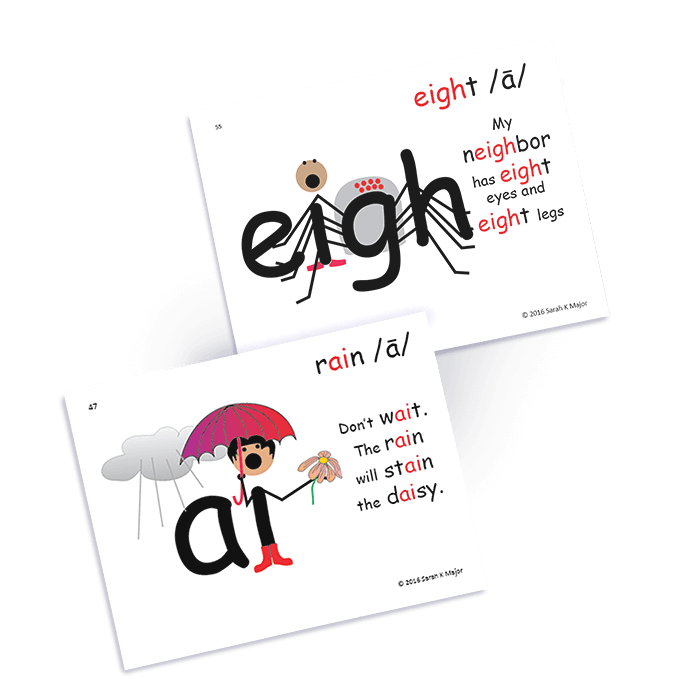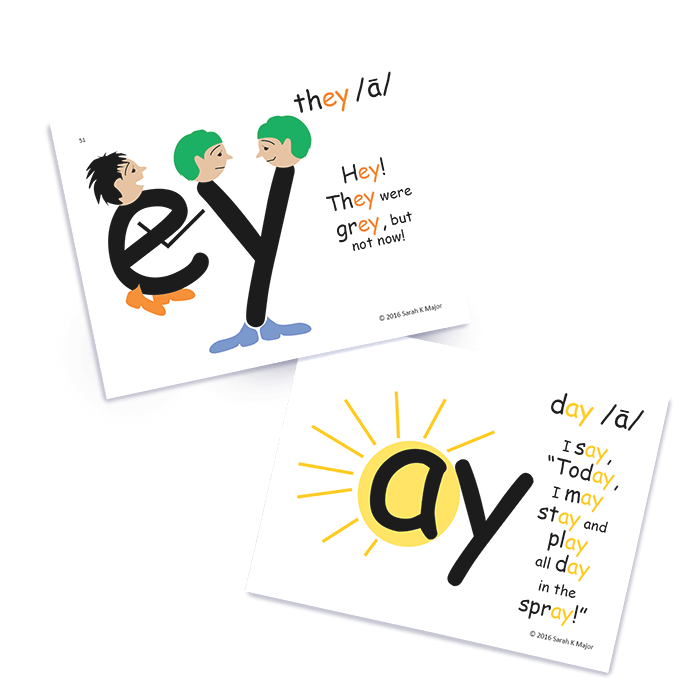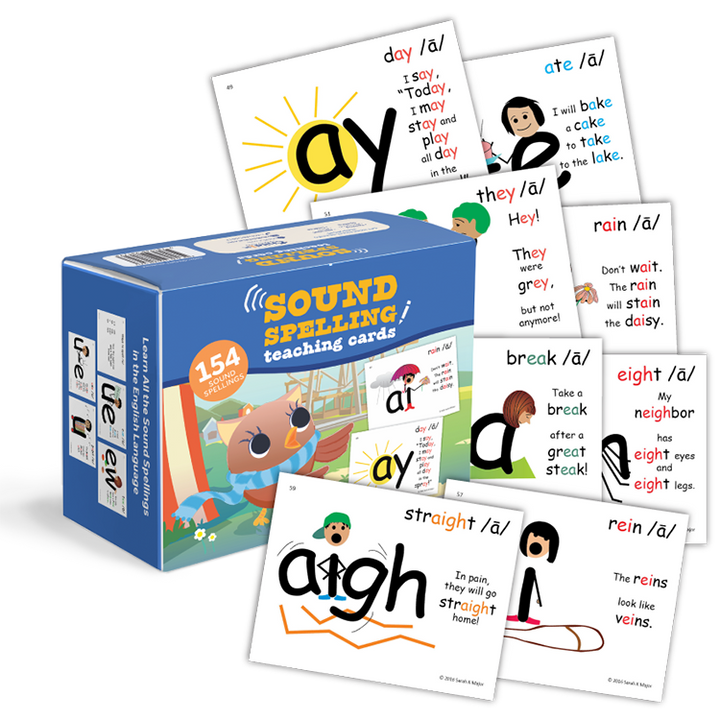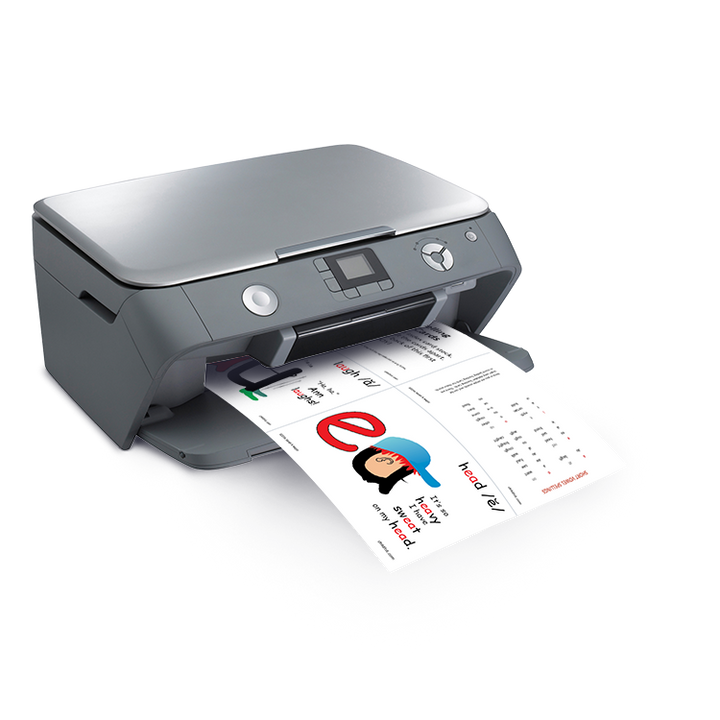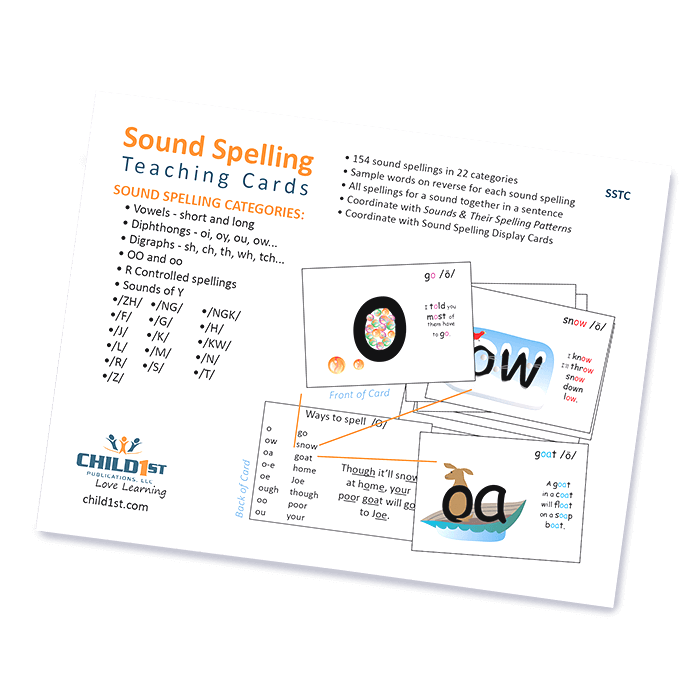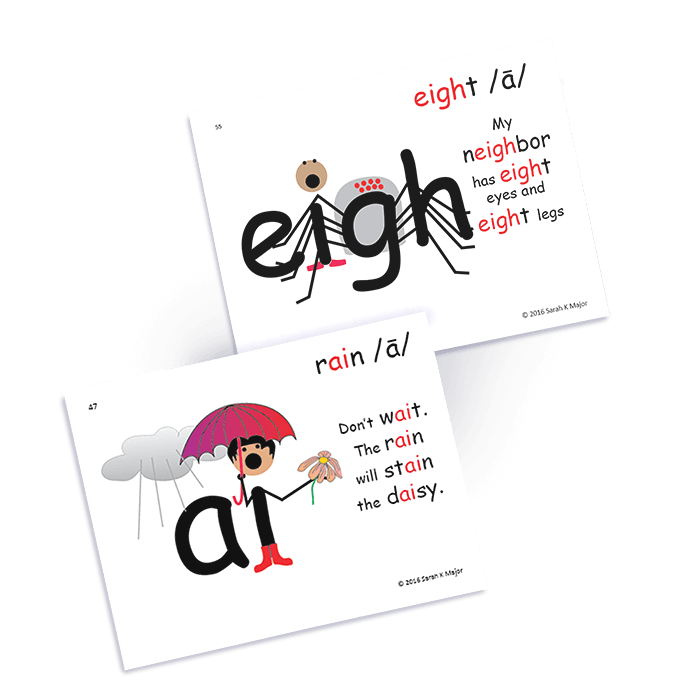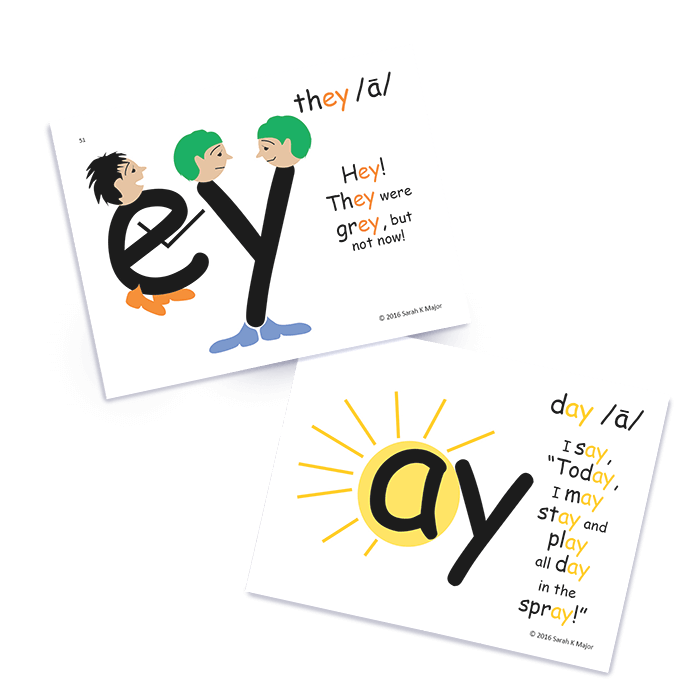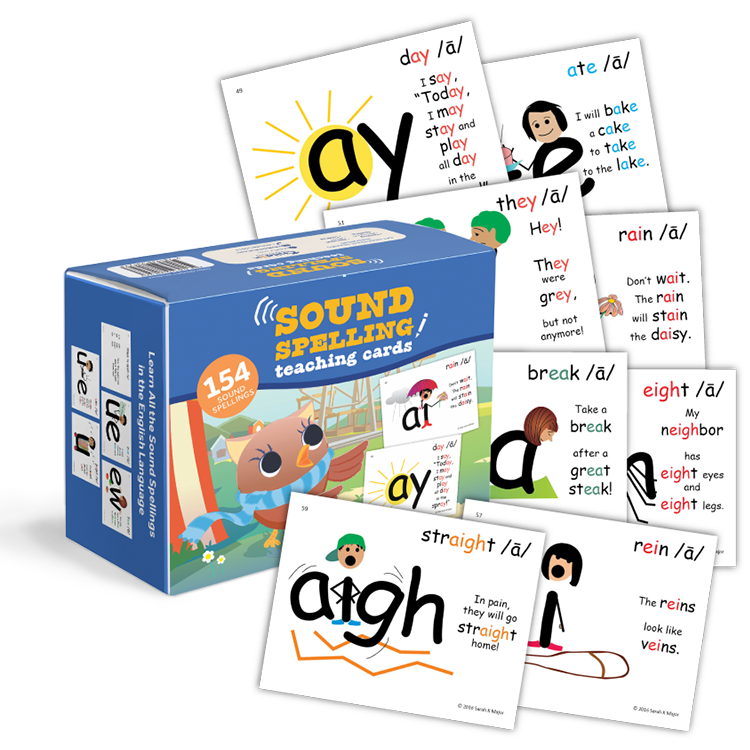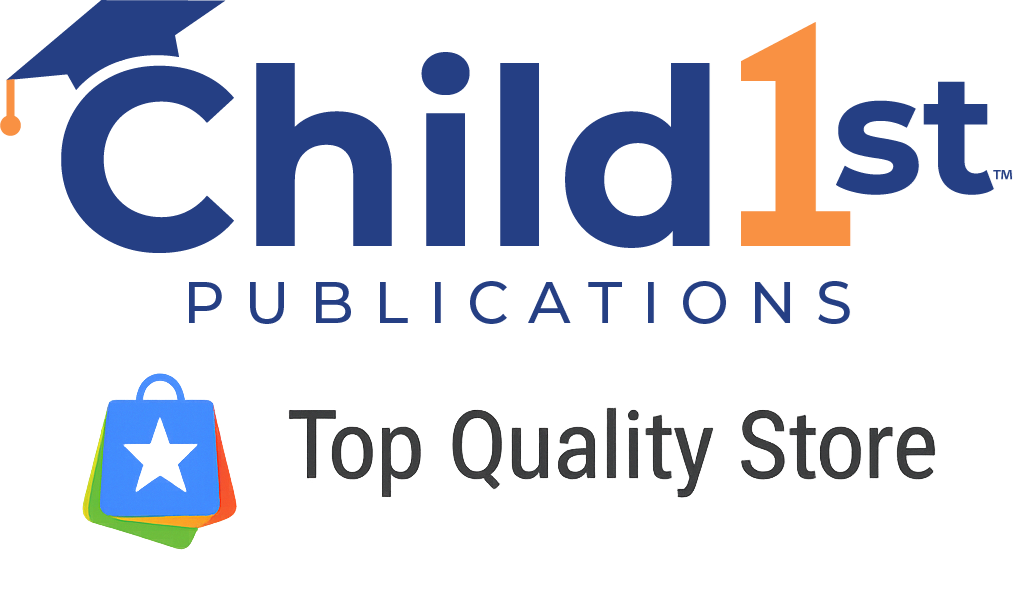Unlock the World of Phonics with Sound Spelling Teaching Cards
Discover the power of effective phonics instruction with our Sound Spelling Teaching Cards! This multisensory toolkit is your ultimate resource for systematic phonics teaching, seamlessly integrating essential elements such as letter-sound relationships, phonemic awareness, and the grapheme-phoneme connection. Designed to engage learners across visual, kinesthetic, and auditory modalities, these cards empower students to confidently decode new words and build a solid foundation in reading.
Why Sound Spelling Teaching Cards Work:
Research underscores the importance of systematic and explicit phonics instruction in early literacy development. According to the National Reading Panel (2000), such instruction significantly improves children's word recognition, spelling, and reading comprehension. Our Sound Spelling Teaching Cards are crafted with this in mind, embedding sound spellings in vibrant images that act as visual mnemonics. These visual hooks enhance memory retention and make the learning of spelling-sound relationships more effective (Ehri, 2014).
Each card is designed to focus on a specific sound spelling, providing students with a keyword—a familiar word that exemplifies the sound spelling. For instance, to teach the Long A sound, select the 8 cards displaying its various spellings, such as "AI as in rain." By exploring related words like "wait," "pail," and "snail," students begin to recognize patterns and understand that different spellings can produce the same sound, a critical skill in decoding (Treiman, 2018).
How It Works:
-
Select a Sound Spelling: Begin by choosing a sound spelling to teach, such as the Long A. Display all 8 corresponding cards that show the different spellings of this sound. This method helps students see the range of spellings that represent the same phoneme.
-
Focus on One Spelling at a Time: Display all the cards simultaneously but direct attention to one spelling at a time. This focused approach helps students internalize the sound-spelling relationship for each variant.
-
Interactive Learning: Reinforce learning by having students create word lists on long strips of paper or in notebooks, categorized by sound spelling. This hands-on activity not only engages students but also solidifies their understanding as they encounter new words (Graham, Harris, & Santangelo, 2015).
What’s Included:
- 154 Sound Spelling Teaching Cards covering key phonics concepts, including Short Vowels, Long Vowels, Diphthongs, Short & Long OO, R-Controlled Spellings, Digraphs, and various consonant sounds like /ZH/, /NG/, /R/, and more.
Note: Single letter sounds and W, V, P, B, and D are not included, as our Right-Brained Phonics & Spelling program focuses on blends of two or more letters. For single letter sounds, please refer to our Alphabet Collection.



